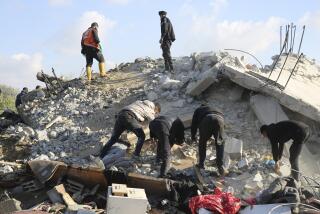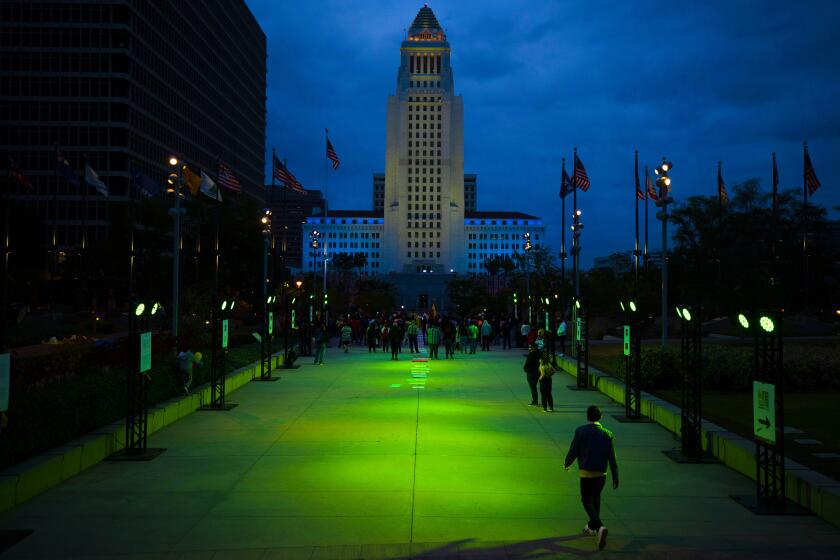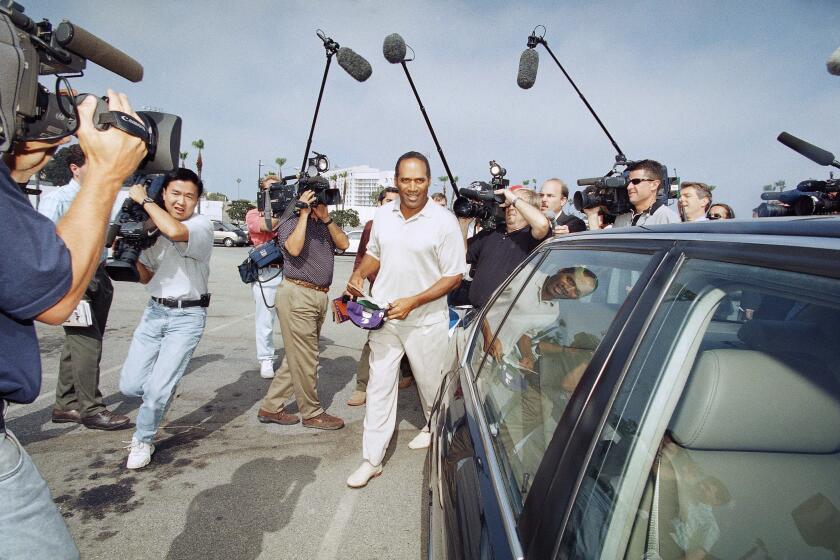What to do about Syria
A statement by a United Nations official that war crimes in Syria can be attributed to “the highest level of government, including the head of state,” has renewed the debate over whether, when and how the United States should intervene in crises abroad.
Some critics of the Obama administration’s cautious Syria policy argue for dramatically increasing aid to rebels seeking the overthrow of President Bashar Assad. Others would go further, creating a no-fly zone similar to the one established in Libya before the overthrow of Moammar Kadafi that would be enforced by an aggressive air campaign. Still others — including some who oppose military intervention — fault the administration for “legitimizing” Assad by negotiating with him on dismantling his chemical weapons program and pursuing a peace conference at which his government would be represented.
But as grievous as the humanitarian situation in Syria is, a unilateral military campaign by the U.S. — even if it were supported by Congress, which is unlikely — could prolong the war, exacerbate the suffering of the Syrian people and make it even harder to achieve the political solution that remains the best hope for ending the violence.
YEAR IN REVIEW: Highs and lows from Obama’s roller-coaster year
That the Assad regime is willing to kill innocents and violate international norms is hardly a surprise at this point, not after the deaths of hundreds of civilians in a chemical weapons attack outside Damascus last summer. Although U.N. investigators didn’t explicitly accuse the regime of carrying out the attacks, its findings strongly supported that explanation. This month, Navi Pillay, the U.N. high commissioner for human rights, suggested that investigators had established a link between the regime and other crimes against humanity. Foreign fighters who support Assad, including members of the Lebanese militia Hezbollah, also have been accused of atrocities.
But not all of the atrocities are being committed by the regime. Some of the fighters seeking to overthrow Assad have also been accused of atrocities. In fact, as in many a civil war, combatants on all sides are willing to harm innocents to achieve their objectives. Adding to the viciousness, the conflict increasingly has taken on the character of a religious war, with Shiite Muslims, Christians and Alawites supporting the government and Sunnis seeking to topple it.
The Syrian civil war would seem an obvious candidate for humanitarian military intervention under the “responsibility to protect” doctrine proclaimed at a U.N. summit in 2005 and later ratified by the Security Council. That policy calls on individual nations to prevent war crimes within their borders, but it also says the Security Council can authorize collective action “should peaceful means be inadequate and national authorities are manifestly failing to protect their populations from genocide, war crimes, ethnic cleansing and crimes against humanity.” But for the Security Council to act, there must be agreement among its permanent members. Sometimes that is easy to achieve. This month, for example, the Security Council unanimously approved the deployment of peacekeepers to the Central African Republic to protect civilians there.
Syria, however, is a geopolitically more divisive conflict. Russia and China have repeatedly vetoed resolutions aimed at punishing the Assad regime and would certainly oppose an operation like the air campaign in Libya. Still, those nations came together with Western powers to approve a resolution under which Syria is expected to dismantle its chemical weapons program. And Russia is intimately involved in preparations for a peace conference next month in Geneva involving representatives of the Assad regime and rebel groups. It’s an understatement to say that the conference might fail, but an agreement — even if it left Assad in power for some period — is the most practical way to end the violence.
Those who advocate a more assertive U.S. policy argue that the most humane option is to ratchet up the pressure on Assad. The sooner he falls, the argument goes, the sooner the violence will end and refugees will be able to return home. But that calculation is naive. An attempt by the U.S. and its allies to overthrow Assad by force would be bloody and protracted and could have disastrous side effects, including the empowerment of Islamist extremists and a rupture in negotiations with Iran, an Assad ally, on its nuclear program. The U.S. policy of providing limited aid to the rebels while pressing for negotiations is still the least bad of all of the available options. (The U.S. also has provided more than $1 billion in humanitarian aid for war victims.)
The U.S. should not rule out humanitarian intervention to protect people around the world facing genocide and crimes against humanity. But it should act only with the broadest possible international support and participation, and only after other means are exhausted. Planners should set narrowly tailored, achievable aims. They should have an exit strategy.
The situation in Syria is heartbreaking. A civil war that began with the repression of peaceful demonstrators inspired by the Arab Spring has resulted in more than 100,000 deaths, including tens of thousands of civilians, and has created 2 million refugees. That the U.N. has been unable to contain the carnage makes a mockery of the notion of “responsibility to protect.” As Pillay observed: “The lack of consensus on Syria and the resulting inaction has been disastrous, and civilians on all sides have paid the price.” But in the absence of such a consensus, this country can do only so much.
More to Read
A cure for the common opinion
Get thought-provoking perspectives with our weekly newsletter.
You may occasionally receive promotional content from the Los Angeles Times.





